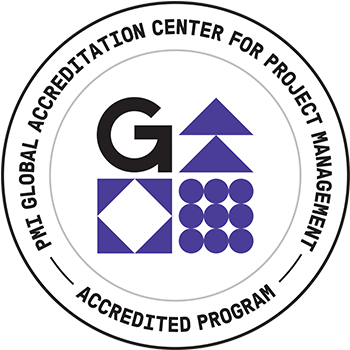
Presentation: What drove the success in delivering the transformative transportation and infrastructure improvements in Washington, DC, SE & SW, that have culminated for now in the replacement of the Frederick Douglass Memorial Bridge?
Presentation Date and Time:
This presentation will cover key techniques for aligning political leaders, neighborhoods, engineers, and government regulators to accomplish major public projects that transform the community. Large projects like those outlined in the Anacostia Waterfront Framework Plan are difficult to design and even more difficult to align stakeholders around. John Deatrick has, however, done it many times and uses some tried and true approaches that will help you create a unifying vision, strategy, and principles to guide teamwork across domains and parties involved.
Abstract: The Anacostia Waterfront Framework Plan, District of Columbia, Office of Planning, November 2003, is a brilliant comprehensive compilation through a unifying vision to spread the wealth of the District of Columbia’s NW to its NE, SE, & SW through correcting the infrastructure, resource, and environmental disparity between those areas. The plan is organized through five themes:
- A Clean and Active River,
- Breaking Down Barriers and Gaining Access,
- A Great Riverfront Park System,
- Cultural Destinations of Distinct Character,
- Building Strong Waterfront Neighborhoods.
I was hired as Deputy Director of dDOT to implement the transportation
and public infrastructure aspects of those themes. Turning those concepts into projects has enabled that ongoing rebirth. The completions of the new Frederick Douglass Memorial Bridge and its associated interchanges are the most recent culmination of that effort fifteen years after I left. The alignment and interchanges for the bridge follow the specific plans that the dDOT and consultant team prepared many years ago, but with a more magnificent bridge as the continuing evolution of that plan. Other projects are in the works enabled by the implementation of the plan. The replacement of the 11st. Bridge spans improved local connections between the neighborhoods on both sides of the river while improving connections to the interstate system, but it also created the opportunity to create a Garden Bridge on the piers left from the old bridge span.
These improvements are the dream projects for engineers and designers because we have the methods and means founded in our training and experience to deliver them, but it takes more than that. The ability of dDOT to follow through with the critical improvements over a twenty-year period, through changes in administration and elected officials, was founded both on a series of jointly manuals and plans and on developing strong commitments and partnerships. Those in turn came together through intensive involvement with affected neighborhoods and the agencies and other interested parties.
That team developed a coherent path from the sketches in the Framework Plan to alignments and design standards to the actual construction plans, specification, and construction contracts to get the projects built and into operation. The partnerships enabled the benefits everyone can now enjoy. These techniques flowed from my lessons learned managing a talented team that delivered the $246 million Fort Washington Way 2000 Expressway Relocation and riverfront rebirth (The Banks) projects in Cincinnati.
Learning Points:
- Where do you start in the development of a great, comprehensive plan with a strong backbone of infrastructure?
- How do you turn magic marker sketches and goals of a great plan into buildable parts and understand what resources are needed to build them into a comprehensive whole, over an extended period
- How were the partnerships developed for funding and political support and the strong internal team to deliver those large-scale civic endeavors?
- How was the concept of fun through success used in the Anacostia Waterfront Initiative and spun off to other projects city-wide? Hint: it was driven by informal monthly discussions with multiple parties that needed to work together, fueled by coffee, muffins, and bagels as well as structured project meetings, project manuals, coffee table quality books with watercolor illustrated studies, and summing it all up in videos for large scale dissemination driving public involvement and partnerships, continual reference on project principles, for all and long term team building to produce a continuity of success.
PMI Talent Triangle: Leadership, Technical Project Management and Public Section Strategic and Business Management
Biography: Mr. Deatrick now serves as an Adjunct Instructor at St. Mary’s College of Maryland, teaching project management after retiring as Director of Public Works and Transportation for St. Mary’s County, Maryland on December 31, 2021. Throughout his 47-year career he has worked in local government on a broad range of duties, including Director of Transportation for the City of Cincinnati and Deputy Director/Chief Engineer, for the Washington, DC, Department of Transportation. During his career he has had responsibility for managing teams that delivered a wide range of public services and award-winning civic improvement projects. Specific examples include the transportation improvements for the Anacostia Waterfront Initiative in Washington, DC and the relocation of Fort Washington Way and delivery of The Banks Project on the Cincinnati Central Riverfront.
His personal focus includes keeping projects within budget and schedule and bringing a sustainable and equitable approach to his work, including carefully considered public involvement, urban design, multi-modal transportation, asset management, green infrastructure, and mixed-use development. He values positive approaches to deliver social and environmental justice and staff development. A Navy veteran, he is a licensed Professional Engineer in multiple states, a Certified Planner (AICP), a LEED AP BD+C, and a Chartered Engineer in the United Kingdom (MICE). He has a BA from University of Maryland, a BSCE from the University of Cincinnati and multiple hours of graduate study in Planning, Urban History, and Art History.

